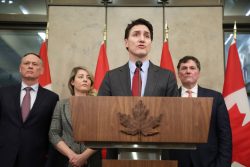Last week I was careful to point out that any serious assessment of the LCDS and the Memorandum of Understanding (MoU) between the Government of Guyana and the Government of the Kingdom of Norway needs to be situated in the broader context of the global negotiations on climate change. Although at this stage both the LCDS and the MOU are running as a bilateral programme, the LCDS has been intentionally framed to be part of a global multilateral arrangement. From its very first iteration (draft) the LCDS acknowledged this in a statement on page 13 of the first draft: “to actually generate these funds over the long term, the forestry sector must be included within the global carbon trading system.”
Because the LCDS should be framed in the context of global negotiations, I began my column last week by indicating that as the process unfolds these negotiations have faced multiple challenges. Of these I characterized what I termed as six “basic contradictions,” one or more of which would at every stage of the negotiations erupt, undermining and disrupting the process. So far I have addressed five of these. And in this week’s column I will begin by addressing the sixth.
To recap, the five basic contradictions considered last week are: 1) the rich countries versus poor countries divide; 2) the cleavage between the principal historic polluters and the principal current ones; 3) the humongous technological and economic challenges facing all countries because of the situation that, at present and for the foreseeable future, carbon-based atmospheric polluting energy is unquestionably the cheapest source of energy; 4) the still unresolved nature of the on-going global financial and economic crisis, the worst since the Great Depression; and 5) the staggering amount of populist political scepticism in the USA about the scientific claims of climate change and global warming, and especially whether this is significantly due to human activity.
Sixth contradiction
The sixth contradiction is in some ways the most complex of them all and perhaps the one most specifically linked to the LCDS. This one arises from the fact that, over the course of modern history, and in particular the present age of liberalisation and globalization, there has been a sustained trajectory in the direction of commercialising, marketizing and commodifying innumerable aspects of nature and facets of life. From this perspective, the atmosphere, or as Eric Phillips has eloquently put it in his much earlier comment on the LCDS “the very air we breathe,” is expected to become another ‘product’ to be traded (that is bought and sold) in private capitalist markets. This is an explosive possibility, with lots of downside risks for the poor and the powerless, as is always the case, when unfettered private capitalist markets control the ownership, production and distribution of essential goods and services.
To the multitude of NGOs, environmental activists, humanists, and indeed progressives generally, without whose energy and dedication we perhaps would never have been made as aware as we now are of the horrific dangers of climate change and global warming until it was too late, this is a most dreadful scenario. As keepers of the global conscience on these matters, their push-back against market excesses contradicts the seemingly inexorable drive of globalization to subsume all issues, threats and dangers to market-based solutions. As we saw in the quote above the LCDS has envisioned this from the very outset.
Contribution of forests
Specifically, the LCDS is situated at the front and centre of this contradiction. First, it sees Guyana’s pristine forests as part of the contribution tropical forests can make to solving the problems of climate change and global warming. As the LCDS indicates, typically tropical deforestation occurs because it is profitable to cut down trees and this action releases carbon to the atmosphere. In Guyana this occurs mainly because of logging and mining. Human settlement and its essential requirements (housing, recreation, transport, fuel, etc) also play a role. The basic idea, however, is that since forests contribute to environmental/atmospheric stability, they will be voluntarily reduced in exchange for compensatory forest carbon payments. In Guyana’s case this would be based on “avoided deforestation,” that is, keeping the forests standing. For readers to fully understand this process requires an appreciation of how the contribution of “avoided deforestation” can be measured, monitored, reported and verified.
Readers should note here that in addition to leaving forests standing, it is possible to plant trees on unforested land or reforest land previously under forest to achieve the same objective of receiving compensatory forest carbon payments. The current estimate is that tropical rainforests may contain as much as one-quarter of the total carbon in our environment. This makes it an essential component for any feasible solution to the global climate problems. In other words tropical rainforests constitute a very important function as a potential carbon-sink. The processes that occur as forests absorb CO2, counteracts carbon emissions elsewhere, thus strengthening the fight against global warming.
There is a specific initiative under the United Nations Framework Convention on Climate Change (UNFCCC) dedicated to framing the role of forests in the global climate change negotiations. That is, the Reduced Emissions from Deforestation and forest Degradation (REDD) programme. As readers are aware from previous columns the UNFCCC is a mechanism for bringing atmospheric concentrations of greenhouse gases under control so as to achieve the target of reducing global temperature increase to less than 2° celsius above pre-industrialization levels. Drawn up in 1992 it came into force in 1994 and has 192 signatory parties. The Kyoto Protocol, which has also been discussed before in this column was agreed to in 1997 and is expected to last until 2012. The recent Copenhagen Climate Change Conference was designed to produce a replacement agreement. Simply put, REDD was designed to provide payments in return for the effective preservation of existing forests. REDD-plus goes beyond that to embrace issues of sustainable forest management, the conservation of existing carbon stocks in the forests and their enhancement.
Next week I will continue the assessment of the LCDS from this point.









